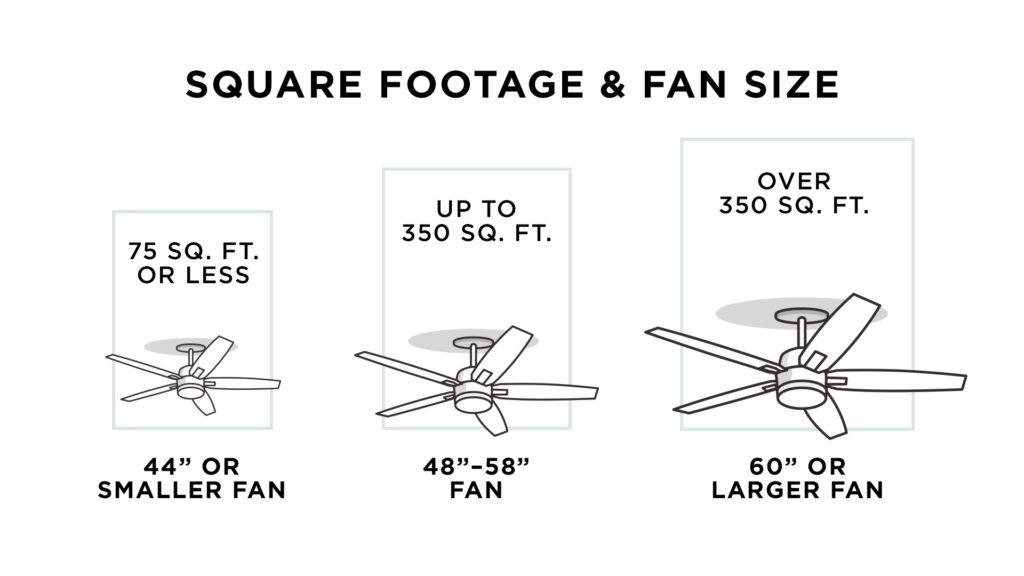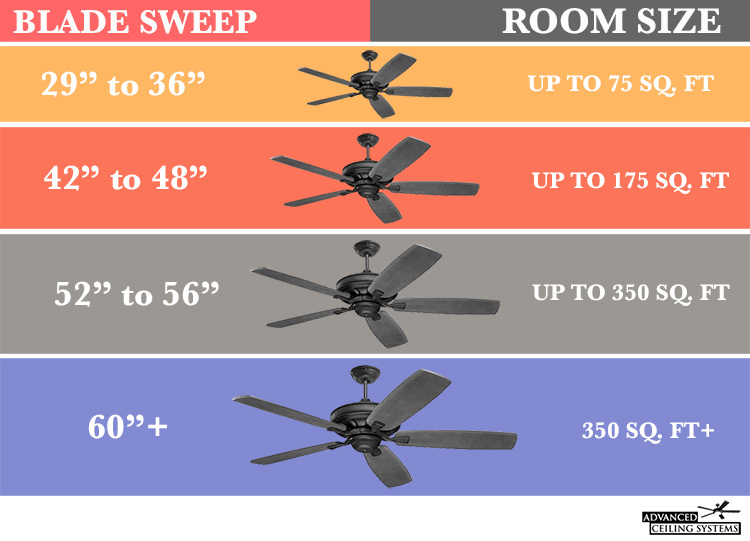Determining the Right Size

Choosing the right ceiling fan size for your small bedroom is crucial for optimal airflow and comfort. A fan that’s too small won’t effectively circulate air, while one that’s too large can be overpowering and noisy. Consider these factors to find the perfect fit:
Room Dimensions
The size of your bedroom plays a key role in determining the appropriate fan size. Generally, a smaller fan is sufficient for a smaller room, while a larger fan is necessary for a larger space. The fan’s blade diameter should be proportional to the room’s square footage.
Ceiling Height
Ceiling height also influences fan size. A lower ceiling height may require a smaller fan to avoid hitting the ceiling. Conversely, a higher ceiling height may accommodate a larger fan with longer blades.
Desired Airflow
The level of airflow you desire depends on your personal preferences and the room’s layout. For a small bedroom, a fan with a smaller blade diameter may be sufficient for gentle air circulation. If you prefer a stronger breeze, consider a fan with a larger blade diameter.
Fan Blade Size and Airflow Efficiency, Small bedroom ceiling fan size
The size of the fan blades directly impacts airflow efficiency. Larger blades generate more air movement, but they also require more energy. In small spaces, a smaller fan with blades ranging from 36 to 42 inches can effectively circulate air without being too overpowering.
Recommended Fan Blade Diameters for Small Bedrooms
The following table provides a general guideline for recommended fan blade diameters based on common small bedroom sizes:
| Bedroom Size (Square Feet) | Recommended Blade Diameter (Inches) |
|---|---|
| 100-150 | 36-42 |
| 150-200 | 42-48 |
| 200-250 | 48-52 |
Remember, these are just general recommendations. It’s always best to consider the specific dimensions of your bedroom, ceiling height, and desired airflow when selecting a ceiling fan.
Types of Ceiling Fans for Small Bedrooms: Small Bedroom Ceiling Fan Size
Choosing the right ceiling fan for your small bedroom is crucial for maximizing space and ensuring optimal airflow. You want a fan that’s both functional and stylish, seamlessly blending into your bedroom’s aesthetic while effectively circulating air.
Flush Mount Ceiling Fans
Flush mount ceiling fans are a popular choice for small bedrooms due to their space-saving design. These fans sit close to the ceiling, minimizing the amount of space they occupy. They are particularly well-suited for rooms with low ceilings, as they don’t obstruct headroom.
Flush mount fans offer a variety of advantages:
- Space Efficiency: Their compact design allows them to be installed in rooms with limited ceiling height, making them ideal for small bedrooms.
- Airflow: Despite their compact size, many flush mount fans provide sufficient airflow for smaller spaces, effectively circulating air and creating a comfortable environment.
- Aesthetics: Flush mount fans come in various styles, ranging from contemporary to traditional, allowing you to find a design that complements your bedroom’s decor.
However, flush mount fans also have some disadvantages:
- Limited Blade Span: Due to their close proximity to the ceiling, flush mount fans often have smaller blade spans compared to other types. This can limit their airflow capacity, especially in larger rooms.
- Lower Airflow: While they can provide adequate airflow for small bedrooms, they may not be as powerful as other fan types, particularly for larger spaces.
Here are some popular examples of flush mount ceiling fans for small bedrooms:
- Modern Flush Mount Ceiling Fan with LED Light: This sleek fan features a contemporary design with integrated LED lighting, offering both functionality and style. The slim profile makes it ideal for low ceilings, while the LED light provides energy-efficient illumination.
- Traditional Flush Mount Ceiling Fan with Remote Control: This classic fan offers a timeless design with a remote control for easy operation. Its compact size makes it suitable for small bedrooms, while the remote control allows for convenient adjustments from anywhere in the room.
Low Profile Ceiling Fans
Low profile ceiling fans are similar to flush mount fans but offer a slightly larger blade span and greater airflow capacity. They are also designed to be close to the ceiling, minimizing their visual impact in small bedrooms.
Low profile fans offer a balance of space efficiency and airflow:
- Space Efficiency: They maintain a compact design, suitable for rooms with limited ceiling height, while providing slightly more airflow than flush mount fans.
- Airflow: Their larger blade span and slightly greater distance from the ceiling allow for increased airflow, making them suitable for slightly larger bedrooms.
- Aesthetics: Low profile fans come in various styles, catering to different design preferences, and seamlessly blend into the room’s decor.
However, they also have some drawbacks:
- Slightly Larger Footprint: While still compact, low profile fans may require slightly more ceiling space compared to flush mount fans.
- Potential Obstruction: In rooms with extremely low ceilings, they may slightly obstruct headroom, requiring careful consideration during installation.
Examples of popular low profile ceiling fans for small bedrooms include:
- Contemporary Low Profile Ceiling Fan with Remote Control: This modern fan features a sleek design with a remote control for easy operation. Its low profile makes it ideal for small bedrooms, while the remote control provides convenient adjustments.
- Industrial-Style Low Profile Ceiling Fan with Exposed Blades: This unique fan boasts an industrial aesthetic with exposed blades, adding a touch of character to the bedroom. Its low profile makes it space-efficient, while the exposed blades create a statement piece.
Mini Ceiling Fans
Mini ceiling fans are specifically designed for small spaces, including bedrooms. They are the most compact fan type, offering minimal visual impact and maximum space efficiency.
Mini fans offer significant advantages:
- Extreme Space Efficiency: They are the smallest fan type, making them ideal for rooms with limited ceiling space, such as small bedrooms or dorms.
- Minimal Visual Impact: Their compact size ensures they blend seamlessly into the room’s decor, minimizing visual clutter.
- Affordable: Mini fans are often more affordable than larger fan types, making them a budget-friendly option for small bedrooms.
However, they also have some disadvantages:
- Limited Airflow: Due to their small blade span, mini fans have limited airflow capacity, making them best suited for very small spaces.
- Less Powerful: They are not as powerful as larger fans, making them less effective for larger bedrooms or rooms with high ceilings.
Popular examples of mini ceiling fans for small bedrooms include:
- Mini Ceiling Fan with Light: This compact fan features integrated lighting, providing both airflow and illumination in small bedrooms. Its small size makes it ideal for rooms with limited space, while the light adds functionality.
- Mini Ceiling Fan with Remote Control: This small fan features a remote control for convenient operation. Its compact design makes it perfect for small bedrooms, while the remote control allows for easy adjustments from anywhere in the room.
Considerations for Small Bedroom Ceiling Fans

Choosing the right ceiling fan for your small bedroom is crucial for ensuring optimal airflow and a comfortable environment. You want a fan that can effectively circulate air without being too overwhelming or noisy, while also complementing your bedroom’s aesthetics.
Motor Power and Speed Settings
The motor power of a ceiling fan determines its ability to move air. For a small bedroom, a fan with a lower wattage motor (around 40-60 watts) is generally sufficient. This provides adequate airflow without consuming excessive energy. It’s also essential to consider the fan’s speed settings. A fan with multiple speed options allows you to adjust the airflow according to your preference and the room’s temperature. For instance, you can use a lower speed setting for a gentle breeze on a cool day and a higher speed setting for maximum airflow on a hot day.
Key Features to Look For
Small bedroom ceiling fans often come with features that enhance convenience and functionality. Here are some key features to consider:
- Remote Control: A remote control allows you to adjust the fan’s speed, direction, and light settings without having to reach the fan itself. This is especially convenient for small bedrooms where the fan might be mounted high on the ceiling.
- Light Fixture: Some ceiling fans come with integrated light fixtures. This can be a practical feature, eliminating the need for a separate light source in your bedroom. Choose a fan with a light fixture that provides adequate brightness for your needs.
- Energy Efficiency: Look for fans with an Energy Star rating, indicating that they meet energy efficiency standards. This can help you save money on your electricity bills in the long run.
Checklist for Selecting a Ceiling Fan
When selecting a ceiling fan for your small bedroom, it’s helpful to consider the following factors:
- Budget: Determine your budget for the ceiling fan. Prices can vary depending on the fan’s features, size, and brand.
- Style: Choose a fan that complements the style of your bedroom. There are various styles available, from modern to traditional, so you can find one that fits your aesthetic preferences.
- Functionality: Consider the features that are most important to you. Do you need a remote control, a light fixture, or specific speed settings?
Small bedroom ceiling fan size – Choosing the right ceiling fan size for a small bedroom is crucial for optimal airflow and comfort. While you focus on maximizing space with creative bed solutions for small bedrooms , remember that a well-sized fan can help create a more spacious feel by circulating air and minimizing stuffiness.
A fan that’s too large can overwhelm the room, while one that’s too small won’t provide adequate air movement. Therefore, carefully consider the size and style of your ceiling fan to create a balanced and functional small bedroom environment.
Choosing the right ceiling fan size for a small bedroom is crucial for optimal airflow and aesthetics. A smaller fan, ideally with a blade span of 36 inches or less, is ideal for maximizing space. To complement the cool breeze, consider incorporating a soothing color scheme like bedroom blue and yellow , which can enhance the feeling of tranquility and relaxation.
The fan’s design should also harmonize with the overall theme, ensuring a cohesive and stylish bedroom environment.

